Your two NEW tunes in JUNE! The first is "Soldier's Joy" arranged as a duet in Level 1
"Soldier's Joy" is one of the oldest and best known fiddle tunes we have. It almost certainly came to the United States in colonial times from somewhere in the British Isles.
Your new arrangement is a duet suitable for two Level 1 pianists. The Secondo, or lower part, is best played by someone with a nice steady beat. It consists of easy C and G7 chords played between the hands in an "um chuck" pattern. The Primo part has the melody. It begins with a broken C chord in the left hand and finger 3 on C(!) in the right hand--a bit unusual at this level.
Pianists generally have little experience coordinating their rhythm and tempo with others, and this piece provides a great opportunity to practice this important skill.
Write your comments at the facebook group. |  |
Also this June: The American Revolution's "Liberty Song" with American lyrics set to
the British Navy's march, "Heart of Oak" in Intermediate Level 1
 | Over the last few centuries, the United States has developed a happy reputation for standing up against tyranny in its many forms. Back in the country's inception John Dickenson wrote the words to "The Liberty Song" which spoke to the determination of colonists to overthrow an imperial government. The British monarchy at the time was rich and powerful, but it was also sadly out of touch with the needs of everyday people in a far off land. We still remain true to our founding father's ideals.
Write your comments at the facebook group. |
In May we welcome our NEW ARRANGER, Şükrü Dellal! He has versions of Karayev's "Vals"
in Level 4 and in Intermediate 2. My easier version is in Level 3
| Your new music this month is a Waltz (in Slavic languages a "Vals") from Kara Karayev's (or Gara Garayev's) ballet, Seven Beauties. You get very few 20th century pieces on this site because of copyright issues, but this piece, written in 1949, has a 20th century sound and, fortunately for us, I feel comfortable posting a piece which was written over 75 years ago. | 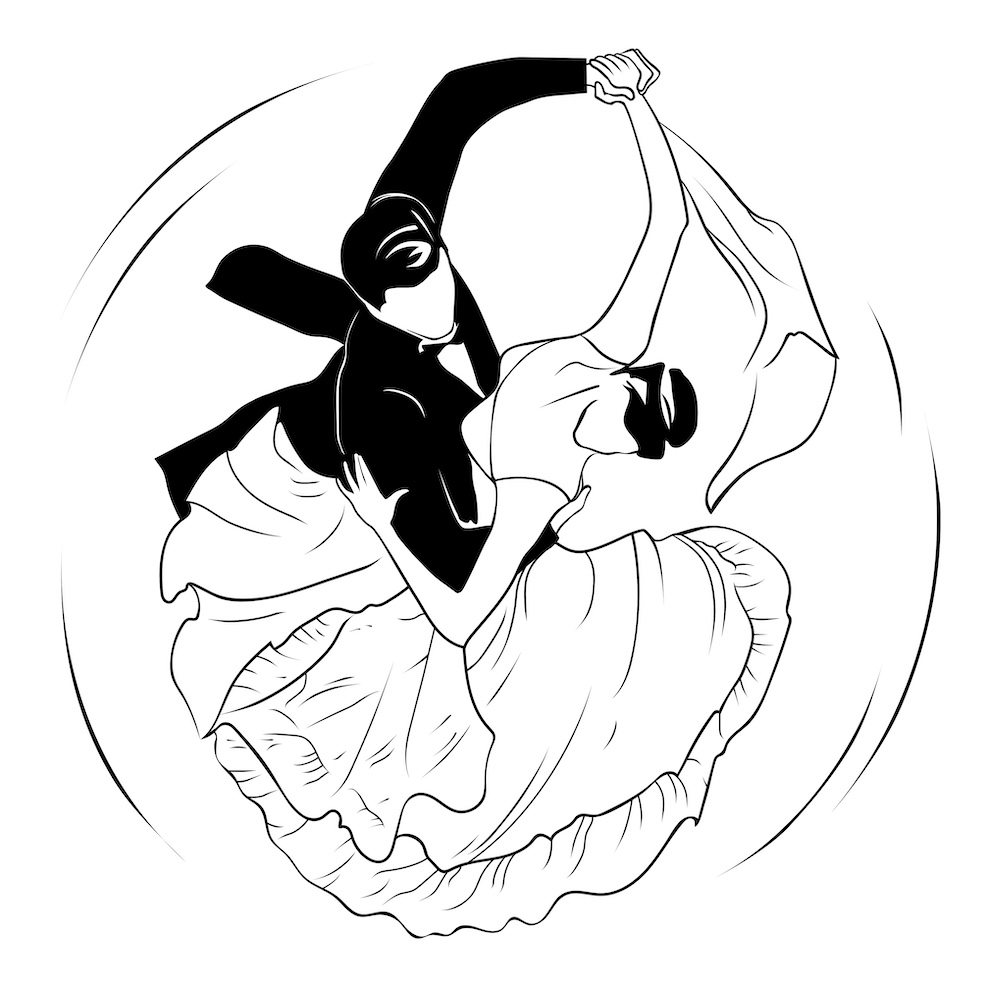 | It is not easy to arrange a full orchestral piece for beginning or intermediate pianists, and the excellent arrangement in Intermediate 2 was the one Şükrü first sent me. I used this as the basis of my simpler offering in Level 3, as did Şükrü for the one in Level 4. We both hope you enjoy playing our arrangements of this quick and exuberant waltz.
Write your comments at the facebook group. |
April's music now available! Play the Welsh song, "All Through the Night/Ar Hyd y Nos"
in Level 3
Here is a reassuring and heart-warming arrangement of this traditional Welsh melody. Sir Harold Boulton's English words speak of peace and guardian angels watching over a sleeping child. Even the predictability of the AABA form reinforce a sense of familiarity and comfort. The melody is as beautiful as it is old, having first been written down in 1784 and no doubt having been sung long before that. It is hardly surprising that this tune has survived all these years.
Write your comments at the facebook group. |  |
And you get even more in April: You get two minuets written by the child prodigy
Wolfgang Amadeus Mozart, both in Intermediate Level 1
 | Mozart wrote the Minuet in F (K. 2) when he was only five or six years old. Far from being a little kid's composition, it shows a sophistication--from the modulation to ii in line three to the half diminished 7th chord in measure 13--which has made it popular over these many centuries. Though easier to play, the Minuet in C (K. 6) similarly shows a mature awareness of form where in the last line young Wolfgang repeats line 2 transposed down a fifth.
The "K" designations show that these are among the earliest of Mozart's compositions. Taken from Ludwig Ritter von Köchel's last name, the K's refer to the minuets' places in a chronological catalogue of Mozart's works. For comparison Mozart's last piece, his famous Requiem, is K. 626.
Write your comments at the facebook group. |
Here's your March Music: The hymn, "In Christ there is no East or West" late in Level 2C
The right hand does quite a bit of jumping around in this piece. From beginning in the familiar C position it moves to "positions" which really don't--and shouldn't--have names at all. Instead, reading music by the end of Level 2 should become more a matter of recognizing letter names than relying on hand positions. Letter name drills and flashcards are especially helpful at this point.
The message of this hymn's lyrics is simple: be kind to everyone, no matter where they're from.
Write your comments at the facebook group. |  |
and here's MORE in March: An original piece called "Lament" in Intermediate Level 3
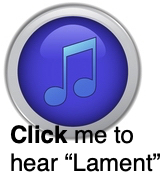 | Half of this piece languished half forgotten in a notebook for many years. Finally last month I finished it and placed it in the underpopulated Intermediate 3.
Write your comments at the facebook group. |
YOURS! in February: Five (5!) versions of "That's Where My Money Goes"
two in First Pieces, and one each in Primer, Level 1, and Level 2
| Why are there sometimes several versions of the same tune on this site? After all, piano methods never repeat pieces at different levels, I guess to avoid complaints like, "But I already did Banks of the Ohio!" The reason for multiple versions here is that you use this site differently than you use method books. Here there are many more pieces to choose from. So, as often happens, when a student has previously skipped over a tune, they will now see a more advanced version as fresh and new. | 
Words refer to a puppy rather than the traditional baby to make the piece more appropriate for children. | Both of the versions in First Pieces have no staffs lines. One is played on black keys and the other on white keys. In both cases the tune has been shortened from four phrases to two.
The Primer Level version includes the full tune played in an "almost-thumbs-share-C position" with finger 2 of the left hand on A instead of B.
In Level 1 the second and third fingers of the right hand stretch over a white key. An explanatory picture of the keyboard shows this unusual fingering.
Level 2 is written in eighth- and quarter-notes instead of quarter and halves as in earlier levels. This "rhythmic diminution" implies a beat which is more true to how the music really sounds. There is the same stretch between right hand fingers 2 and 3 as there is in in Level 1.
Write your comments at the facebook group. |
Happy New Year! Here's to a musical and joyous 2025!
Your NEW January music! "The Can-can" in Primer Level
Play this with gusto! The can-can is an energetic dance which includes high kicks, cartwheels and splits, so play it loudly and fast. There are in fact musical instructions in your sheet music about this: the fancy "f" at the beginning and between the staffs means play loudly, and the Italian word "Allegro" above the top staff means play quickly. Come to think of it, this would be a good piece to play to celebrate the New Year!
Write your comments at the facebook group. | 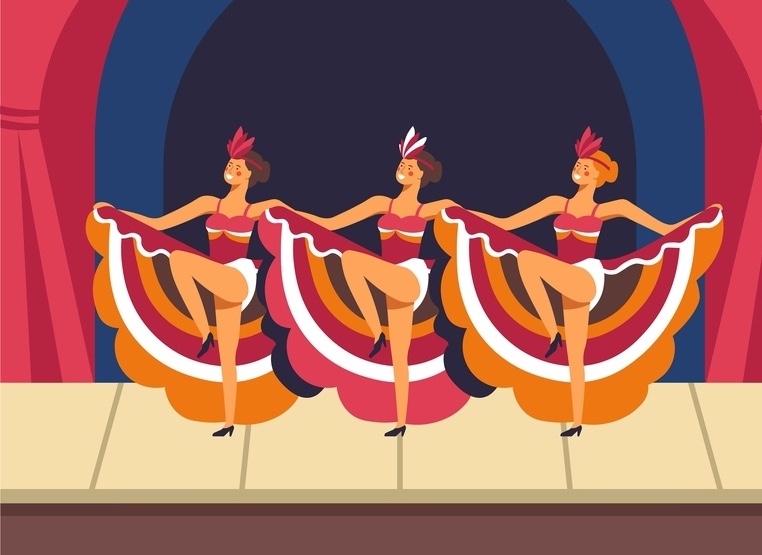
|
and still MORE music: the Italian partisan song, "Fischia il vento/The Wind Blows"
in Intermediate Level 1 |
"The wind blows, the bugle blares, Our shoes are broken yet we must go on." These lyrics speak to me more as a determination to overcome exhaustion than a rousing call to arms. So I set this music mostly quietly as the resistance fighters take a brief rest. Soft half-steps in the introduction, accompaniment and coda represent the wind whistling in the trees.
Unlike last month's "Bella Ciao" this song was actually sung by the partisans of World War II when they were fighting the Nazis and Mussolini's sympathizers.
Write your comments at the facebook group. |
Your NEW December 2024 offering: "Shenandoah" in Intermediate Level 2
"Some lyrics of this song heard by and before 1860 tell the story of a trader who fell in love with the daughter of the Oneida Iroquois chief Shenandoah (1710 - 1816) who lived in the central New York state town of Oneida Castle." So says Wikipedia, but if so, why are there so many references to crossing the distant Missouri River? In any case it is clear that in this song, "Shenandoah" does not refer to the lush valley in Virginia by the same name.
The most interesting musical aspect of the song is its meter. The arrangements I have run across each have their own variations of changing meters, using 4/4, 3/4 and sometimes 2/4 in individual ways. If I were to arrange this for solo voice I would simply put fermatas all over the place and let the performer decide how long to hold the notes in an essentially free meter.
Write your comments at the facebook group. |  |
and a December piece in honoring WW II Italian partisans, "Bella Ciao" in Primer Level
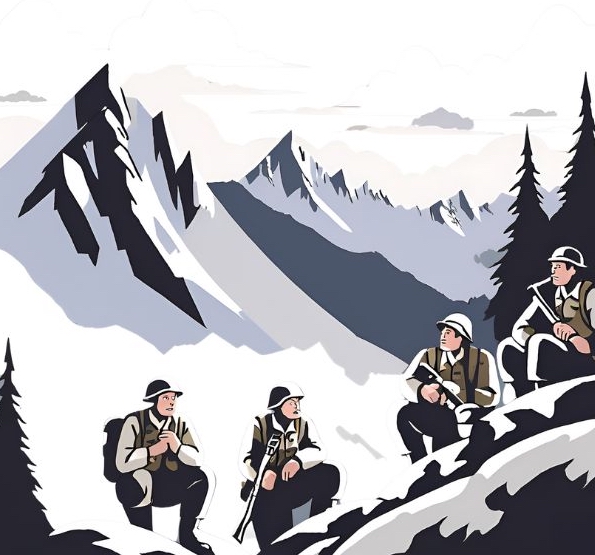
| The lyrics to this song were written in the early 1950's to honor those who had put their lives on the line to expel the Nazis from Italy. The melody and original words, though, are much older. They were originally sung by female laborers in the rice fields who endured harsh conditions and demeaning treatment from their bosses.
The more recent words may be translated like this:
This morning I awakened (Goodbye, beautiful, goodbye), This morning I awakened and I found the invader.
Oh partisan, carry me away...because I feel death approaching.
And if I die as a partisan...then you must bury me.
Bury me up in the mountain...under the shade of a beautiful flower.
And all those who shall pass...will tell me "what a beautiful flower."
This is the flower of the partisan...who died for freedom.
Write your comments at the facebook group. |
NOW NEW in November: "The Blue Danube Waltz'" in Level 2
You can now download Johann Strauss Jr.'s most famous waltz. A sensation when it was first played in Strauss's hometown of Vienna, it was heard by equally rapt audiences as part of the science fiction classic movie. "2001: A Space Odyssey." See the video. You will see a graceful dance performed not by a waltzing couple but by two spaceships!
Two little technical things to watch out for in this piece: there is a fair bit of hand crossing, left over right, and there is a non-standard broken chord in measures 10 and 14.
Write your comments at the facebook group. | 
A view of Vienna from the river Danube |
...and ANOTHER new piece in November! "In the Austrian Alps" also in Level 2

| Also in Level 2 you are getting an original piece inspired by Alpine yodeling....and since I have been contributing Austrian pieces lately I have decided to call it "In the Austrian Alps." The tune is a series of broken chords in the key of F, mostly played by the right hand. I chose F because it is noticeably higher in pitch than the usual C position (yodeled notes are sung quite high) and because in the still higher key of G the short right thumb must reach for a far-away black key, F# in the D7 chord. Awkward! Instead in the key of F the right thumb reaches for the much more manageable E in C7.
Write your comments at the facebook group. |
NEW! in October: A little blues music, "Blue Ditty" in First PiecesYou wanna play blues on your first lesson? Download this! This little tune uses the blues scale with pre-staff notation. It comes complete with a duet part which emphasizes the E-flat tonic. Double the people, double the fun! Give this to your students who just signed up for lessons this fall.
Write your comments at the facebook group. | 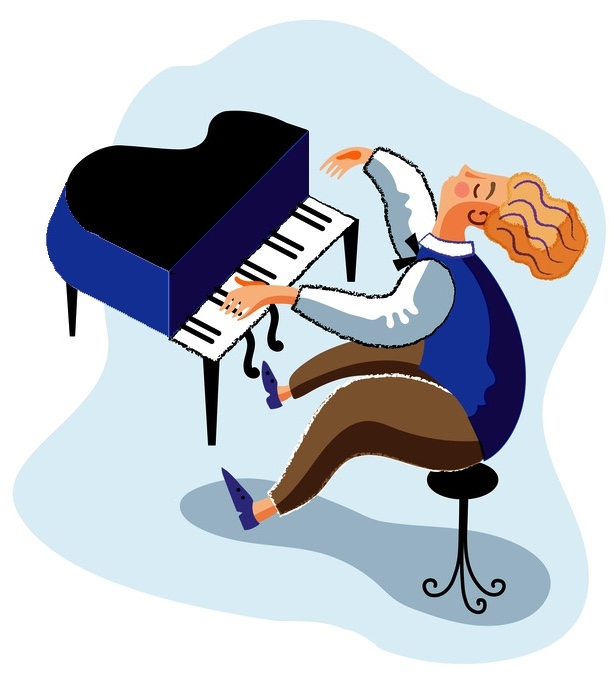
|
Also New! The Austrian song "O, du lieber Augustin/Oh, You Dear Augustine" in Level 4
| This familiar tune provides practice with I and V7 chords in the keys of D, A and E. The melody is almost identical to last month's, "Did You Ever See a Lassie" with chords in in C, F and G, but this month's offering is intended for older and more skilled students.
The lyrics tell of a bagpiper who--despite being down on his luck and despite his home town of Vienna being ravaged by plague--still manages to lift peoples' spirits with his music.
Write your comments at the facebook group. |
NEW! in September: The Irish and Scottish song, "The Parting Glass" in Intermediate Level 1"Parting is such sweet sorrow," says Juliet to Romeo--I'm so sad that you must go, yet I'm excited to anticipate your return. Play "The Parting Glass" in this spirit. Friends and lovers cannot be with us all the time, but there is a comfort, a sweetness, in knowing we will always be in their hearts. Eventually they will return and we will welcome them back.
Here are some of the lyrics:
Fill to me the parting glass
And gather as the evening falls
And gently rise and softly call,
"Goodnight and joy be to you all."
Write your comments at the facebook group. | 
|
Also New! "Did You Ever See a Lassie?" in Level 2
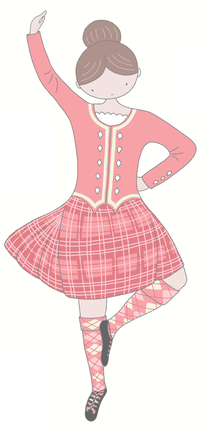
| This month you are getting "Did you ever see a Lassie?" in three keys, C, F and G. This "Free Piano Music!" site allows great flexibility in teaching and learning. If a student or teacher feels the need for practice in one key more than another, then that key is available and sufficient. If transposition is a priority, all three can be assigned. And if that "Lassie" song is just too girlish for some students, then there is always "Oats, Peas, Beans and Barley Grow" at the end of Level 1. It is so important to tailor one's teaching to the individual student, and this site enables you to appropriately supplement the more generically written piano methods.
Write your comments at the facebook group. |
For YOU for AUGUST! A new and more attractive Countries IndexNow when you go to the Countries Index three new pictures for each country will pop out at you: There is a map showing where each country is in relation to its continent, there's a picture of the country's flag and there's a picture of either its national animal or its coat of arms (a few countries do not have a national animal). It is my deep belief that, if we are to get along in this world, people need an appreciation for cultures around the globe. I hope you will consult this newly designed page when choosing your repertoire.
Write your comments at the facebook group. | 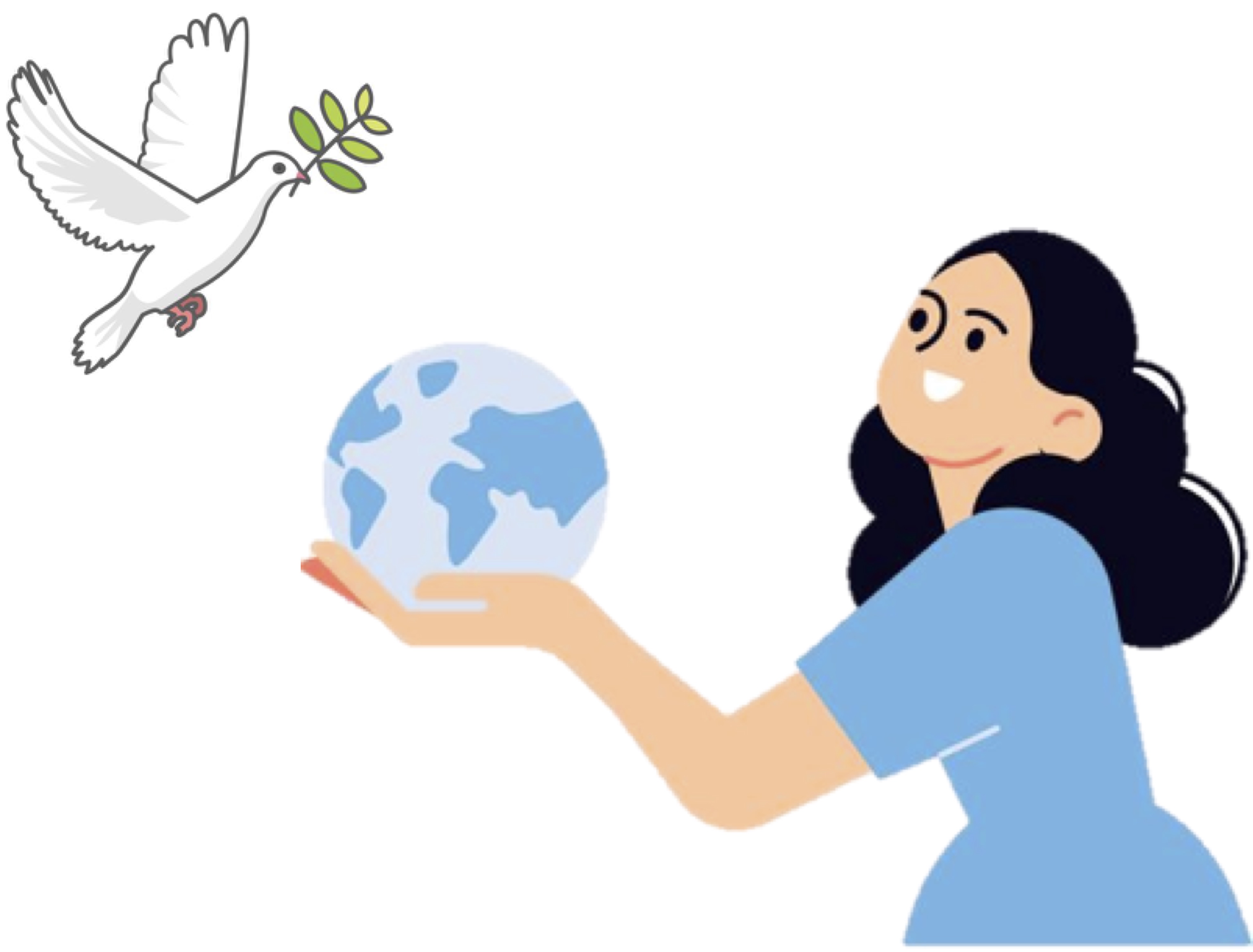
|
...and your NEW PIECE! The Italian classic, "Torna a Surriento (Return to Sorrento)"
in Intermediate Level 2

| Sorrento--or "Surriento" in the Neapolitan dialect--is a town overlooking the Bay of Naples in Southern Italy. The Sorrentine Peninsula not only has beautiful views of Naples, but also of Vesuvius and the Isle of Capri. This song has been made famous by Italian tenors such as Enrico Caruso, Luciano Pavarotti and Andrea Bocelli.
I am giving you two versions of the song, one in lead sheet notation and one with the left hand written out in a straightforward "um chuck chuck" waltz accompaniment. See if you can duplicate this accompaniment looking only at the chords in the lead sheet.
Write your comments at the facebook group. |
For YOU! A NEW JULY piece! Two versions of "Drill, ye Tarriers, Drill", one in Primer Level
and one in Level 3This work song tells of constructing railroads across the United States in the 1800's. The title refers to Irish workers, drilling holes in rock to blast out railroad tunnels. In the Level 3 version you can almost hear the blasts, marked forte, in the left hand, especially at the end of the piece where a blast is played quite low on the keyboard. For Level 1, the chorus of this song is played in the left hand only, giving the student valuable practice in reading bass clef.
Write your comments at the facebook group. | 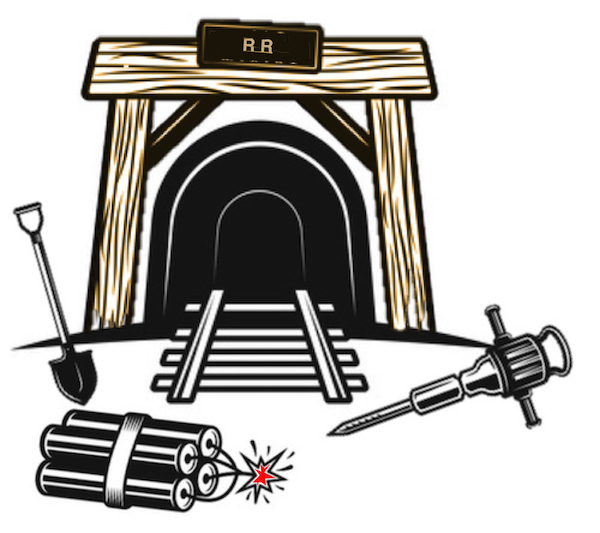
|
...and ANOTHER piece for YOU! "The Grand Old Duke of York" is now in Level 1

| This old Duke of York may have been grand, but he certainly wasn't very bright. He marched his men up to the top of a hill, only to have them march back down again. This pointless exercise is followed in the song by the equally pointless observation, "When they're up they're up, and when they're down they're down." Silly old song!
Here you have another piece, like "Marianne" last month, for students who are almost-but-not-quite ready for their 3-note C and G7 chords.
Write your comments at the facebook group. |
A NEW TUNE for JUNE! A Calypso song from Trinidad, "Marianne", in Level 1 The singers "Roaring Lion" (born Rafael de Leon) and Terry Gilkyson popularized this calypso song in the late 1940's and '50s. Calypso is a style of Caribbean music which originated in Trinidad (Roaring Lion himself was Trinidadian), and is frequently played on steel drums. The video page compiled for this song has one version sung by Roaring Lion and another played on a steel drum. Calypso influenced many later Caribbean styles, among them ska and reggae.
If you have students on the cusp of learning 3-note C and G7 chords then this piece is for them. If you self-teach be aware of the importance of these chords. They will be the basis for much of the music to come.
Write your comments at the facebook group. | 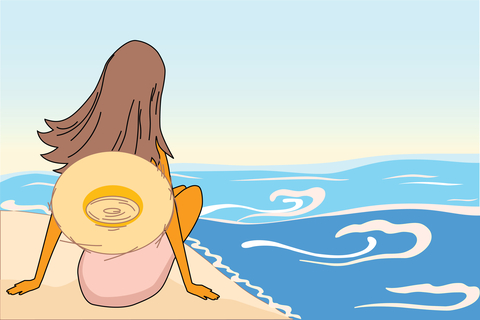 |
...and here's a NEW JUNE BLUES: "Careless Love" in Intermediate Level 1 
| This blues is most associated with the great singer Bessie Smith who recorded it in 1925. It has since become a jazz standard recorded by many artists, including Fats Domino, Nat King Cole, Ray Charles and Van Morrison. Play this piece slowly--most traditional blues is not played fast--and don't look for the familiar 12-bar progression because--guess what--you won't find it! I hope you enjoy your new sheet music!
Write your comments at the facebook group. |
NEW MUSIC in MAY! Two versions of the first movement of a Sonatina by Le Couppey,
one in Keyboard Classics, and one in Intermediate Level 1 In Intermediate Level One you will find the music that Le Couppey originally wrote. I lightly edited it, adding my own fingering, phrasing and dynamics. At this level students should be working on balance--usually bringing out the notes of the right hand. But when the melody falls to the lower notes it is important that the left hand play them forte.
You will find the Keyboard Classic version simpler in three ways: I brought the right hand down an octave to more familiar territory, I doubled all the time values (eighth notes became quarters, quarters became halves etc.) in a process called rhythmic augmentation, and I omitted the more difficult second section.
Write your comments at the facebook group. |  |
...But there's MORE in MAY: An easy version of "Plaisir d'amour /The Joys of Love"
in First Pieces 
| This piece is for the many adults who want to begin playing the piano. While the beautiful melody seems at first to compliment the romantic title and first words, it quickly becomes clear, instead, that the singer is suffering from a broken heart. Refrain from the temptation to shorten the long notes at the end of a phrase. To do this it will help to count the beats steadily as you hold those notes. In the mp3's there is a click track throughout the whole piece to help with the timing.
Write your comments at the facebook group. |
Here's your NEW April music! The Palestinian Song, "Al Rozana" in Level 3 The reason for the non-Western sound of this piece is interesting: while the right hand uses notes from the familiar C major scale, the left hand uses flatted notes from a minor scale--specifically from C natural minor. The combination of the two also lends a haunting quality to this Palestinian song. I hope you like it as much as I do.
Write your comments at the facebook group. |  |
And another piece for April! The Israeli dance, "Zemer Atik" also in Level 3 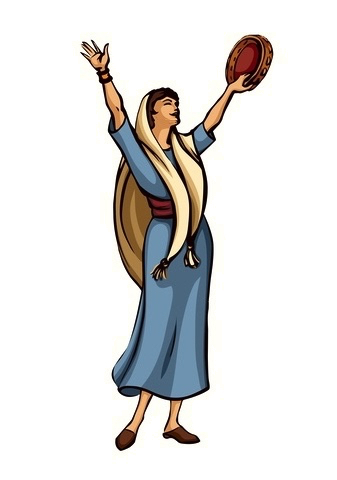
| In this dance the non-Western feel of the music is due to a different device: here the melody uses notes from the A harmonic minor scale. It is rare to hear this set of notes in western melodies, though they are frequently used in harmonies--hence the name. Its identifying feature is the step-and-a-half between F and G-sharp. The scale is played almost in its entirety in the introduction and coda. How does it sound to you?
Write your comments at the facebook group. | 
Palestinians and Israelis sing and dance under the same sky |
Your FREE Music in March! Three (3!) new versions of "Blow the Man Down"
in First Pieces, in Primer, and in Level 2 "Blow the Man Down" now appears four times on these pages (the fourth version is already in Level 3B). It is a rowdy tune that plays to children's fascination with pirates as well as a sea shanty that fun-loving adults can identify with.
Your three new versions of this song are easy this month. You play the ones in First Pieces and Primer Level identically, but you will be reading the one in First Pieces in a "no-staff" notation (none of those horizontal lines). In the Level 2 version the right hand spans a 6th, from middle C up to A. Plenty to learn! Plenty to enjoy!
Write your comments at the facebook group. |  |
...and MORE March Music: Two versions of "To Market, to Market," both in First Pieces, 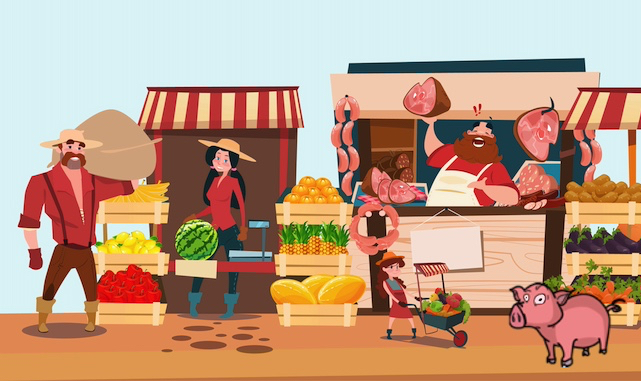
| Again, you play the two versions of this song identically, but the notation is different, just like the easy versions of "Blow the Man Down" (see above). My original tune is especially easy because the words are appropriate for young children. By the way, this is not the tune that you may have heard set to this nursery rhyme, that tune would would have been too difficult to play at this level. I hope you like your new music!
Write your comments at the facebook group. |
Here's FEBRUARY's first piece for you! An original Fanfare (by me) in Intermediate Level 1 Imagine trumpets blaring, announcing the arrival of important people--maybe a city's heroes coming home and being welcomed by a huge crowd. There's a parade in the offing and festivity in the air. This is a happy piece. Play it with enthusiasm!
Write your comments at the facebook group. | 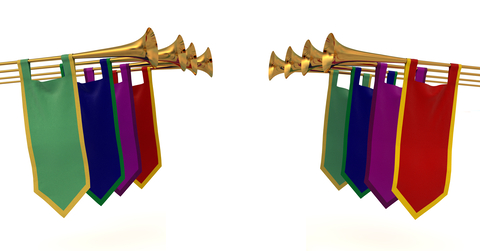 |
...and TWO versions of your SECOND piece: "A Jewish Song / Ale Brider"
in Levels One and Two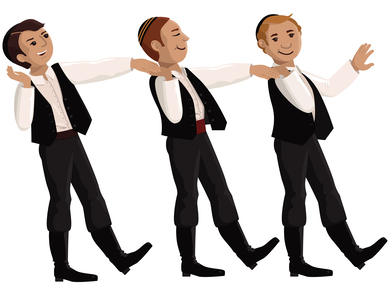
| Yiddish songs, like this one, tend to be in minor keys, but that doesn't mean they are sad or dark. In fact they are frequently joyful--see the smiles on the faces of the singers in the videos I have posted.
The Level 1 version never wavers from a C hand position and has an E-flat written as an accidental. Note the interesting pattern in the left hand--being aware of it may help in playing it. The Level 2 version is the site's first piece emphasizing chords in E minor. Practicing patterns of these chords will be helpful. Try repeating Em, Am, Em, B7, Em until the transitions are smooth. By the way, these primary chords feel the same as those in G Major in that the left hand pinky stretches to play the only black key.
Write your comments at the facebook group. |
In a world full of conflict it is refreshing to play music about peaceful, flowing rivers. | Both of your new songs are about peace. They range from inner peace to world peace, but they are also meant to include a kind of peace in our politics. May the year 2024 be one that returns to civil and respectful conversations, may it include listening to and trying to understand people who are different from us, people with whom we may disagree. | Here's your music for January 2024: "Peace, I Ask of Thee, O River" in Level 3C Maybe peace in the world begins with an inner peace. The tempo indication in this song is, "Slowly, as a prayer." Imagine you are in a canoe paddling down a river, the forests and hills drifting slowly by...
Write your comments at the facebook group. |  |
...and here's more for January: "Down by the Riverside" also in Level 3C
| "Down by the Riverside," sometimes called, "Ain't Gonna Study War No More," is more insistent than your first song. Here the singer is absolutely determined to "lay down my sword and shield." You can play the song joyfully though, especially during the refrain which is marked forte.
May 2024 be a year of reconciliation and understanding.
Write your comments at the facebook group. |
Happy 2024! May your New Year be peaceful and prosperous!
Your NEW MUSIC for DECEMBER 2023! Two versions of the Macedonian song, "Bitola"
one in Level 3C and the other in Intermediate Level 1 Here is another piece with which to explore music from around the world. This song has a meter of 7/8--unfamiliar to western ears, but common in Balkan countries. In Beginner Level 3 you can play the 7/8 rhythms correctly with help of a click track which is heard from beginning to end in all the .mp3's.
The Intermediate version modulates from the key of C to D. No click track is provided here, so be careful with the rhythm. The 7/8 is consistently divided into 3 beats, the first of which is always 3 eighth notes in duration, and the second and third are each 2 eighth notes long. If you think of the beats as "long, short, short" and keep the eighth notes steady, the meter will become second nature to you. Personally, I have become addicted to 7/8--there are so many beautiful Balkan songs and dances using this meter!
Other pieces in 7/8 on this site are: Šano Dušo in Primer Level, and a Greek Kalamatianos in Intermediate Level 4.
Write your comments at the facebook group. | 
Clock tower in the city of Bitola
|
NEW November music! "Lavender's Blue" in First Pieces B and in Level 2C  | This English folk song goes back at least to the 1600's, but it is still sung and played today as an easy piano piece, as part of an opera by Benjamin Britten, and--maybe most popularly--in the 2015 film, Cinderella.
The version you are getting in First Pieces has eighth notes--you know, the ones connected by a big bold line--which mean play twice as fast as the previous quarter notes. Resist the temptation to pause after this series of faster notes. The last one is also short which means the G after the bar line needs to come in quickly. In the Level 2 version watch out for the placement of the left hand--it does not begin in C position!
Write your comments at the facebook group. |
Also in November: A Hindi counting song, "Dhobi Aaya" in Level 1B This is one of the few Indian songs which is popular throughout this large country (It is frequently sung to the tune, "Frère Jacques.") In it, a customer counts the items of laundry returned by the cleaner. Students unfamiliar with either English or Hindi might be interested to see the numbers from one to ten written out in both languages in the score.
This piece is written in the traditional right-hand-melody/left-hand-accompaniment arrangement. I wrote left hand chords with two notes only, but feel free to add a third note if the student is ready.
Write your comments at the facebook group. | 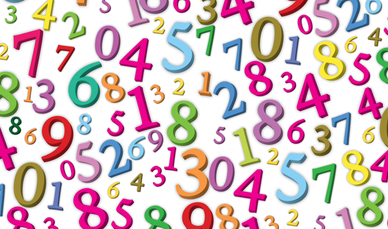
|
My OCTOBER offering: The Icelandic song, "Sleep, Oh Sleep my Little One" in Level 3A  | This haunting tune tells of Iceland's long dark winter nights. It is not yet the dead of winter for "weeping" outside there is still a dreary rain. Play this song quietly. It is a lullaby in which mama safely guards her child's toy farm animals.
Jóhann Sigurjónsson wrote this song in 1911 for a play, and it is still very well known in Iceland.
Write your comments at the facebook group. |
...and still MORE October sheet music! "Whirling, 'Round and 'Round" or, in Italian,
Giro, giro tondo in First Pieces Unlike this month's other piece, don't be afraid of playing this song quickly. It is about the sheer fun of the whole world turning around and around after which everyone loses control and falls down. Enjoy!
Write your comments at the facebook group. | 
|
Here's your NEW SEPTEMBER music! Now a Level 3 version of "Long, Long Ago" 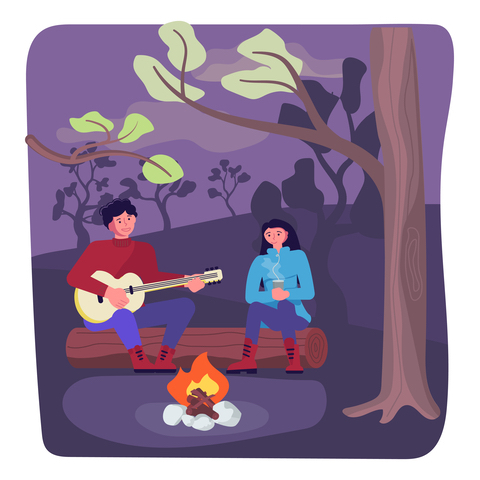
Finger picking guitarists also play
patterns of notes to sustain a chord. | This version of "Long, Long Ago" introduces what is called an "Alberti Bass." Alberti basses are repetitive patterns of notes which belong to an accompanying chord. These patterns were developed for the keyboard musician's left hand as a means of sustaining chords. Unlike many other instruments, notes on keyboard instruments die away quickly.
For an easier version of "Long, Long Ago" see last month's contribution (below).
Write your comments at the facebook group. |
And ANOTHER September song: Hänsel und Gretel (Hansel and Gretel) in Level 1 "Hansel and Gretel" also helps familiarize the student with chords. I wrote the song out three times as lead sheets in the keys of C, F and G (I and V7 chords only). So to play the piece correctly the student must know the name of each chord.
Words are written both in German and in English.
Write your comments at the facebook group. | 
|
NEW MUSIC in AUGUST: The Yiddish song, "Tumbalalaika" in Level 4A
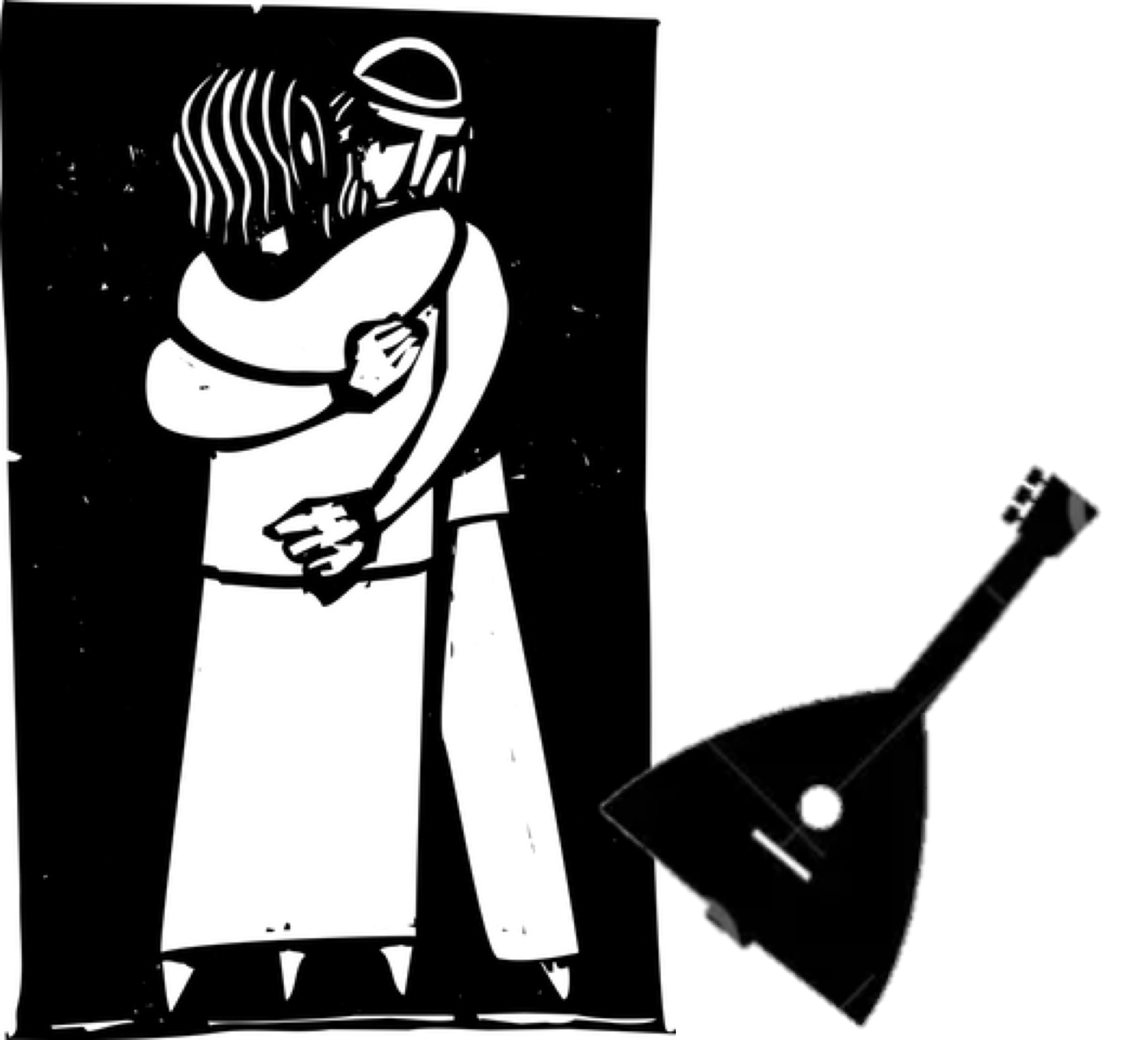 | A young man devises a plan to choose a girl who is witty and bright. He asks:
"What can grow, grow without rain?
What can burn and never end?
What can yearn and cry without tears?"
To which he is answered,
"Foolish lad, why do you have to ask?
Understanding can grow, grow without rain,
Love can burn and never end,
And a heart can yearn and cry without tears."
This combination love song/riddle song is a favorite at Jewish gatherings. The balalaika is a 3-stringed Russian instrument adopted by Russian Jews, and Yiddish is the language of the Jews of Eastern Europe--including Russia. It is similar to German, but written with Hebrew characters. So what looks like Hebrew at the bottom of page one is actually the first verse in Yiddish.
Write your comments at the facebook group. |
STILL MORE music for AUGUST! "Long, Long Ago" in First Pieces This much-shortened version of "Long, Long Ago" is arranged for those who are just beginning to read music. With some modifications to the words, it has been reduced to just two lines of music--see the videos to hear the complete version. I am thinking of arranging the whole song at some higher level; stay tuned. Meanwhile, hold those whole notes for 4 full beats! No cheating! I'm watching you!!
Write your comments at the facebook group. | 
|
NEW MUSIC in JULY: Two versions of "The Animal Fair," one in Primer Level A
and another in Level 2C
 | Here's a silly old nonsense song which is bound to please kids--as well as grown-ups who are still kids at heart. The Primer Level version never strays from Thumbs Share C position. Though its length may at first seem daunting, its sheer silliness will surely make it a favorite.
The Level 2 version is in 6/8 with the right hand in a non-standard, though rather fixed, hand position.
Write your comments at the facebook group. |
STILL MORE music for JULY! An Air written by Johann Christian Bach for the Notebook of
Anna Magdalena Bach in Intermediate Level 1 Johann Christian Bach wrote this tune for his mother's instructional notebook of harpsichord pieces. Anna Magdalena was the great Johann Sebastian's second wife and their child, Johann Christian, was their last son.
Johann Christian broke away from his father's impressive and complicated style of composing and helped usher in a style which was simpler, more pleasant, refined and graceful. He had successful careers in Italy and London--he became known as the "London Bach"--and when the Mozarts visited England he taught young Wolfgang his new way of writing. Upon hearing of Bach's death Mozart commented, "What a loss to the musical world!"
Write your comments at the facebook group. | 
Johann Christian Bach
1735 - 1782 |
NEW MUSIC in JUNE: "America, the Beautiful" in Level 4A
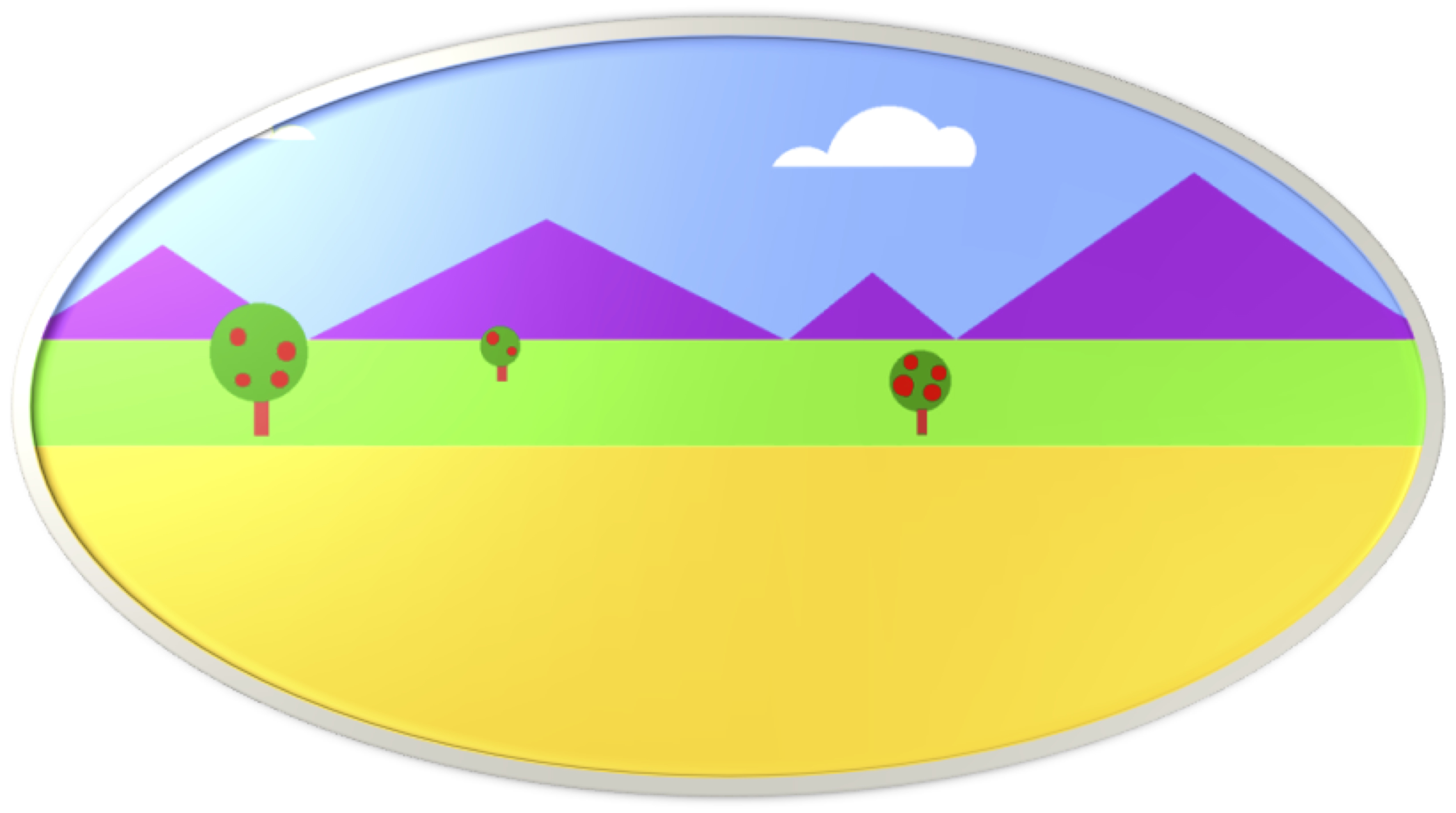 | A tribute to the vast and beautiful land that we have become stewards of. Also check out your Level 1A version which was posted shortly after 9/11.
Write your comments at the facebook group. |
...and TUNE TWO in JUNE: "The Juniper Tree" in Primer Level A Early Primer Level students will enjoy playing "The Juniper Tree" during their very first lessons. Taken from Ruth Crawford Seeger's American Folk Songs for Children, this song is arranged - in Thumbs Share C Position (no shifting of hands or finger stretches)
- with no flats or sharps
- with hardly any music played hands together, and
- with no eighth notes.
A happy satisfying piece of music for beginning pianists.
Write your comments at the facebook group. |  |
|
MUSIC in MAY features two original compositions by Gil (me, your host on this site)!
First is "There's a Rabbit in the Garden!" which is now the final piece in Primer Level  | Poor rabbit is minding its own business contentedly munching on lettuce when a big scary farmer's dog comes around and chases it into its rabbit hole. Life is rough!
As kind of a good-bye to the Primer Level page, "There's a Rabbit in the Garden!" reviews "thumbs share C" position at the beginning, and, when the LH shifts down at the end, "plain old C" position as well. There are also changes in dynamics (loudness) as the farmer's dog threatens poor rabbit, and an increase in tempo (speed) during the chase scene. Lastly, just as method books often end with a longish show-off piece, Primer Level now ends with this two page recital-ready piece as well.
Write your comments at the facebook group. |
... And secondly, "The River Raft" in Level 3B Relax and enjoy the peace (pun intended) of floating downstream. Though there are no tempo or rhythmic challenges in "The River Raft," what put it into Level 3 rather than 2 are the independence from hand positions and the ledger lines in both clefs. So get your note spellers and drills out and quiz your students at their lessons on letter names. They will then have access to a wealth of sheet music, including "The River Raft," to learn largely on their own.
[An aside: Actually when I began teaching I didn't see any use for learning letter names. The crucial relationship, I thought, was just associating the position of a note on the staff with a key on the keyboard. But I quickly learned that--for some reason I still don't understand--letter names are practically indispensable for reading music fluently. Just an empirical fact.]
Write your comments at the facebook group. | 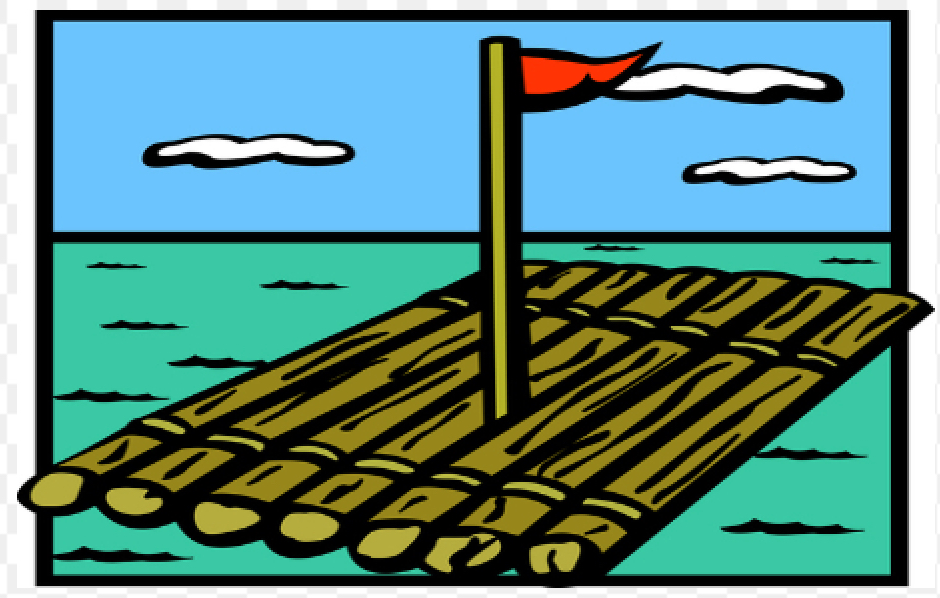 |
|
Pour avril, deux chansons en français! / For April, two songs in French!
1. Du Canada, "V'là l'bon vent" dans Niveau 2C / From Canada, "Hear the Wind" in Level 2C 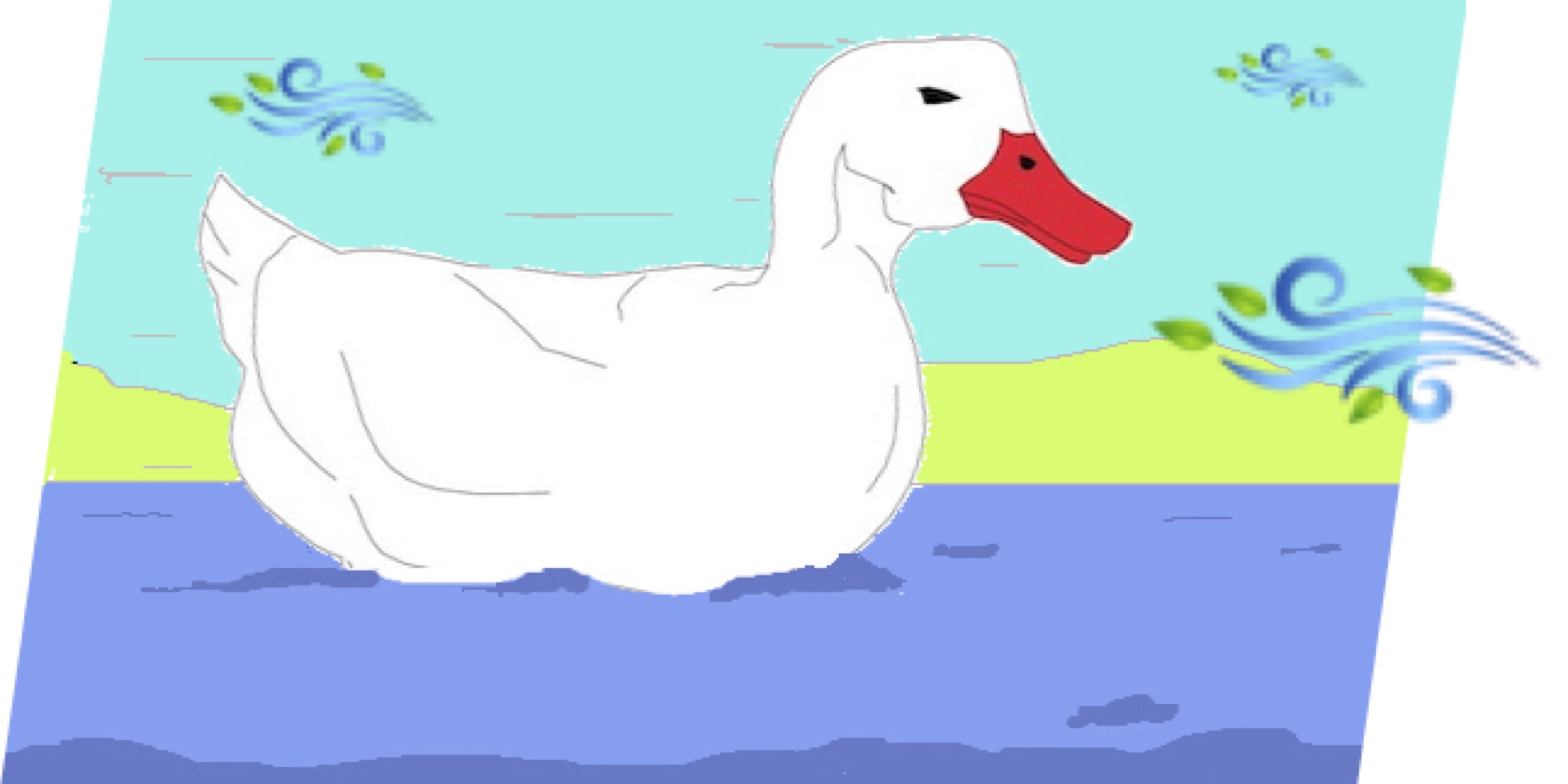 | English: Canadian outdoors people love to sing this song! The name is a contraction of "Voilà le bon vent" where "le bon vent," (literally "the good wind") refers to having the wind at your back. This wind helps in paddling a canoe. (I am aware my English version, "Hear the Wind" is not a literal translation of the French.) This is also a great recital piece. While playing the notes alone is not difficult, there are many expressive elements including a ritard, a fermata, phrasing, and dramatic changes of octave and tempo at the end.
Français: Les amateurs de plein air canadiens adorent chanter cette chanson! "Le bon vent" fait référence au fait d'avoir le vent dans le dos, ce qui aide à pagayer un canoë. C'est aussi un excellent morceau de récital. Même si jouer les notes seules ne soit pas difficile, il existe de nombreux éléments expressifs, notamment un ritard, un point d'orgue, le phrasé, et des changements dramatiques d'octave et de tempo à la fin.
Write your comments at the facebook group. |
2. ...et de la France, "Il était une bergère" dans Niveau 2A /
...and from France, "There Once was a Young Shepherdess" in Level 2A English: I learned "Il était une bergère" many years ago and was surprised to find that it is still a popular children's song. The words go on to tell a story of a disobedient cat: "If you put your paw in the cheese I'm making, you'll get the stick!" warns the young bergère.
Français: J'avais appris "Il était une bergère" il y a de nombreuses années, et j'ai été surpris de constater que c'est toujours une chanson populaire pour les enfants. Les paroles racontent ensuite l'histoire d'un chat désobéissant : "Si tu mets la patte dans mon fromage, tu auras du bâton!" prévient la jeune bergère.
Write your comments at the facebook group. |  |
|
Here's your MARCH MUSIC! "Five Green and Speckled Frogs" in Primer Level A  | Have you ever sung "99 Bottles of Beer on the Wall"? Well, this song is similar: some item in the lyrics--whether it be bottles or frogs--decreases by one with each verse. The major difference here is that we are counting down from 5 rather than 99, a big improvement for impatient adults!
"Five Green and Speckled Frogs" is written in thumbs share C position. B's are flat and, for ease of reading, the rhythm is written to avoid eighth notes. Try this straightforward arrangement of a popular "reverse counting" song!
Write your comments at the facebook group. |
And here's MORE March Music! "This Little Light of Mine" now in Level 3A This song is so great you are getting it twice! Two years ago I posted this song on the First Pieces page, but now students who are up to Level 3 can play a version with a fuller sound.
The big things to watch in this piece are the B-flats played with the left hand thumb. There is a tendency to twist the wrist at this point so the thumb can reach this black key. This awkward hand position can be avoided if the whole hand moves away from the player and (as is suggested in red in the score!) the other fingers go between the black keys. Try it, you'll like it!
Write your comments at the facebook group. |  |
|
For February children are getting two pieces which they will LOVE...
(But which squeemish grown-ups may HATE).
Introducing two DISGUSTING songs:
This month your KIDS GET: "Nobody Likes Me (Guess I'll Go Eat Worms)"
in both First Pieces and in Primer Level  | Worms! Oh yuk!, Why did I ever arrnage this piece? Now I have to write about eating them and their different sizes and squirminess. No, grown-ups will NOT like this. They will not want to hear their children singing and playing and giggling over such disgusting slimy little animals.
What have I done?
Write your comments at the facebook group. |
and MORE for February! "Great, Green Globs of Greasy Grimy Gopher Guts"
in Level 1 Oh no! This one's worse! Kids, don't tell your teachers and parents I posted this. I will for sure lose my reputation as a serious, cultured musician. Did I really put this song up on a site that has the music of Johann Sebastian Bach? What would he say if he were alive today to see this?
Boy, am I in trouble!
Write your comments at the facebook group. |  |
|
Happy 2023! May your year be filled with music!
NEW Music for the NEW Year, 2023! "Amen" in Level 2C  | Joyful music with a simple message, "Amen" has only two words: "Amen" and occasional interjections of "Hallelujah." This is another late Level 2 to early 3 piece, hovering around C position. Some challenges for the student--and things that make it harder than a late 1 to early 2 Level--might be: - The beginning stretch with the left hand thumb to A (marked in red!)
- A shift up one note in the right hand to span D to A
- The "Hallelujah interjections," at one point played with both hands.
Write your comments at the facebook group. | More NEW Music for January 2023! "Italian Folk Song" by Tchaikovsky
in Intermediate Level 2 The composer of a devilishly hard violin concerto and "The Nutcracker Suite," Tchaikovsky also wrote relatively easy pieces for piano. "Italian Folk Song" is taken from his opus 39 Album for the Young which is similar to Schuman's collection by the same name, and from which I have taken several pieces for my site. I would encourage teachers and students to explore more of Tchaikovsky's delightful set, along with his Twelve Piano Pieces (op. 40) for more repertoire.
Write your comments at the facebook group. | 
Pyotr Ilyich Tchaikovsky
1840 - 1893 |
|
Music for DECEMBER 2022! "Bright Are the Leaves of Autumn" from Japan
in Intermediate Level 2 
The forests of Miyajima Island, Japan | To the left is a picture I took on my recent trip to Japan. The leaves were just turning wonderful shades of red and orange, and when I saw a Japanese song on Mama Lisa's site about colorful autumn leaves, I thought this would be the perfect song to arrange for piano. Called "Momiji" ("Autumn Leaves" in Japanese), it is taught in many elementary schools. "Everybody knows it," my tour guide said.
This same tune is sung in a video spinoff of a Japanese manga series (comics and graphic novels) with the English title, "Who's in the Forest Strolling." The English words to this version have nothing to do with the original lyrics praising autumn foliage, so I wrote English words based on two literal translations of the original Japanese on Mama Lisa's site. (Thank you, Mama Lisa.)
"Bright Are the Leaves" is more advanced than most pieces I post here, and it took me a good while to arrange it (which is why I am posting one piece instead of two this month). I hope my intermediate level visitors like their new music.
Write your comments at the facebook group. |
| Here's Your NEW November Music! "The Second Story Window"
(or "Threw it Out the Window") in Level 1B What a fun, silly song! Take the first few lines of any nursery rhyme and follow them with "And threw it (or them) out the window." Hilarious results ensue! Like:
Old king Cole was a merry old soul,
A merry old soul was he,
He called for his pipe and he called for his bowl,
And THREW THEM OUT THE WINDOW!
The window, the second story window... If you are at about Level 1 you will definitely want to play this silly song!
Write your comments at the facebook group. |  |
ALSO for November! A new version of "Gilly, Gilly Good Morning" in Level 2A 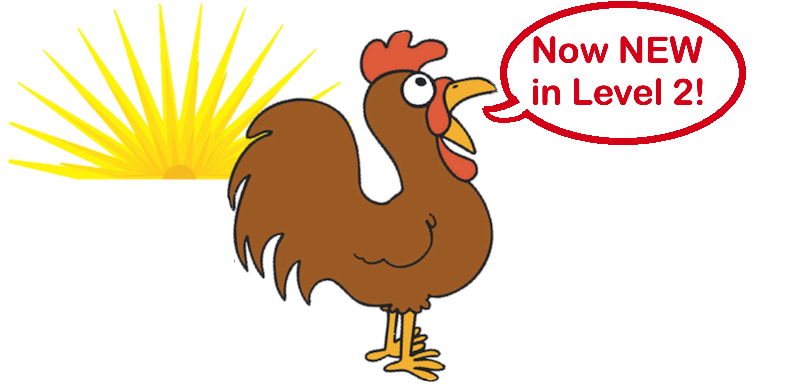 | Now a student at a slightly higher level than Level 1 can enjoy playing a complete version of "Gilly, Gilly Good Morning." This version differs from the one you got last month: - in the use of three-note chords (both hands)
- in stretches down to F# (for a D7 chord)
- in a shift of hand position in the right hand, and
- in the addition of a new section (Minnie mack, Minnie mack...)
Enjoy!
Write your comments at the facebook group. |
| YOUR NEW OCTOBER MUSIC! Gilly, Gilly Good Morning in Level 1C A great song for beginning any morning activity, "Gilly, Gilly Good Morning" adds a bit of sunshine to a student's sometimes dreary practice time. Play it quickly and have fun!
"Gilly, Gilly Good Morning" is the perfect introduction to G position. There are no finger stretches, no shifts in hand position and no 3-note chords. Just keep your fingers on the keys and play!
Write your comments at the facebook group. | 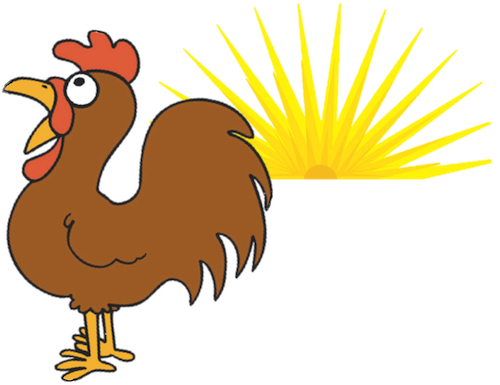 | AND ALSO FOR OCTOBER: Wade in the Water in Level 3B  | "Wade inthe Water" is an African-American spiritual first performed in the late 1800's by the Fisk Jubilee Singers. This choir belonged to the Fisk School, now Fisk University, one of the first historically black colleges in the United States.
It is believed that Harriet Tubman used this song to warn slaves to get off the trail and into the water to prevent dogs, used by the slavers, from finding them. See also my arrangement of "Follow the Drinking Gourd."
Write your comments at the facebook group. |
| YOUR SEPTEMBER MUSIC IS UP! Two versions of "House of the Rising Sun",
one in Level 2 and one in Level 4"House of the Rising Sun" is an American folk song dating back several centuries and possibly originating in England. Those who are only familiar with the version recorded by the English group, The Animals, may be surprised that many folk and blues artists preceded them, including Jean Richie, Woodie Guthrie, Josh White, Lead Belly, Joan Baez, Bob Dylan... the list goes on. The lyrics, omitted in my versions, decribe the regret of a woman working in a house of ill-repute or of a man who frequents the house. While I have omitted the words, the serious tone is clearly reflected in the minor key.
Write your comments at the facebook group. |  |
|
Here's your NEW music for August! A Level 2 arrangement of Sibelius's "Finlandia"  | Finlandia was composed by Jean Sibelius during the Russian occupation of Finland. It is a patriotic Finnish piece whose sentiment was not tolerated by the Russians. "In order to avoid Russian censorship, Finlandia had to be performed under alternative names at various musical concerts. Titles under which the piece masqueraded were numerous and often confusing--famous examples include Happy Feelings at the awakening of Finnish Spring, and A Scandinavian Choral March." (Wikipedia)
How appropriate this piece is given today's international news!
Write your comments at the facebook group. |
But wait, you get MORE in August! The Danish carol, "Now it's Christmas Again /
Nu' det jul igen" also in Level 2This month's pieces were inspired by my recent trip to the Nordic countries. When I asked my tour guide for a well known Danish song, she suggested this Christmas carol. The picture to the right (also on the sheet music) depicts the Danish custom of dancing around a tree adorned with real, lighted(!) candles. Piano teachers who start planning their Christmas recitals in the fall should remember this piece.
Write your comments at the facebook group. |  |
|
Your NEW Music for JULY! Two versions of "Everywhere We Go", One in First Pieces B
and the other in Level 2A 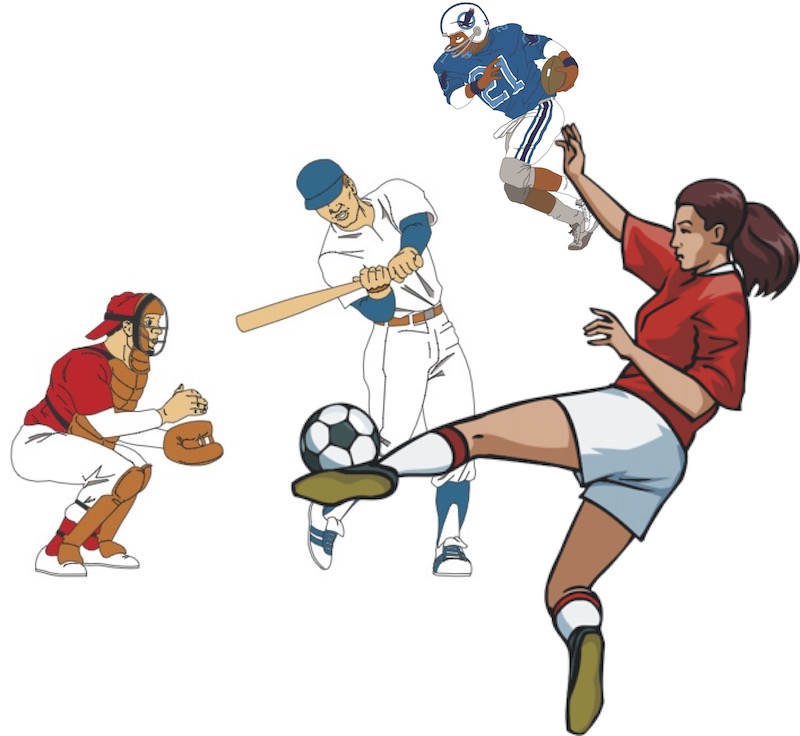 | Cheer leaders chant it at college games, scout groups sing it around the campfire and drill sargents call it as a cadence for marching soldiers. "Everywhere We Go" is a rhythmic chant which many a piano student will recognize and want to play.
In the First Pieces level it is a two handed piece in a not-quite Thumbs Share C hand position. Unlike in Thumbs Share C, fingers 2 and 3 of the left hand play A and G respectively instead of B and A. This positioning provides more room for the thumbs.
I placed "Everywhere We Go" as the very first piece in Level 2. This placement is because it perfectly introduces second inversion chords, a kind of chord played in many Level 2 pieces, including in the very next piece, "Oh Susanna". (Some Music Theory: In a second inverion chord the note which is usually a fifth above is moved to the bottom. So for an F chord, the C becomes the lowest note.)
Write your comments at the facebook group. |
|
JUNE'S Music! "Seashells by the Shore" from the Ukrainian "You Tricked Me"
in Primer Level AThis popular Ukrainian song has humorous lyrics which sound harsh without the context of its many verses, verses I had no room to include. So instead of the angry-sounding, "You tricked me" (because you didn't show up when you said you would), I substituted the more innocent, "Where are you? I don't see you."
Like the beginning of the Ukrainian National Anthem which is listed just above on the Primer page, this song is in an easy Thumbs Share C arrangement.
Write your comments at the facebook group. |  |
Another June Tune! "Did You Trick Me?" also from the Ukrainian "You Tricked Me"
in Level 3B  | Lyrics for the Level 3 version include the suspicious-sounding "Did you trick me?" rather than the more accusatory Ukrainian, "You tricked me!" In any case regardless of the words, it is the exciting and fun melody which is so attractive in this song.
Technical skills include moving from a D minor hand position to F Major. Be aware that the hand positions change abruptly between the second and third lines.
The periwinkles in the verse can refer to either a flower or a sea snail. Thus the two different pictures and English lyrics associated with the two arrangements.
Write your comments at the facebook group. |
|
NEW Music in May! From England, "The Foggy, Foggy Dew" Level 3CThis month you are getting the English version of "Foggy, Foggy Dew" as popularized by Burl Ives and as set by Benjamin Britten (there is also a very different Irish song by the same name). In your new arrangement--though rhythmically and harmonically straightforward--the hands wander around the middle of the keyboard with no relation to any "hand position" at all. ...and it is this independence from hand positions that places it in a late 3 or early 4 level.
Write your comments at the facebook group. |  |
More Music in May: Invention No. 1 by J.S. Bach, newly edited and now with mp3 playback
in Intermediate Level 4 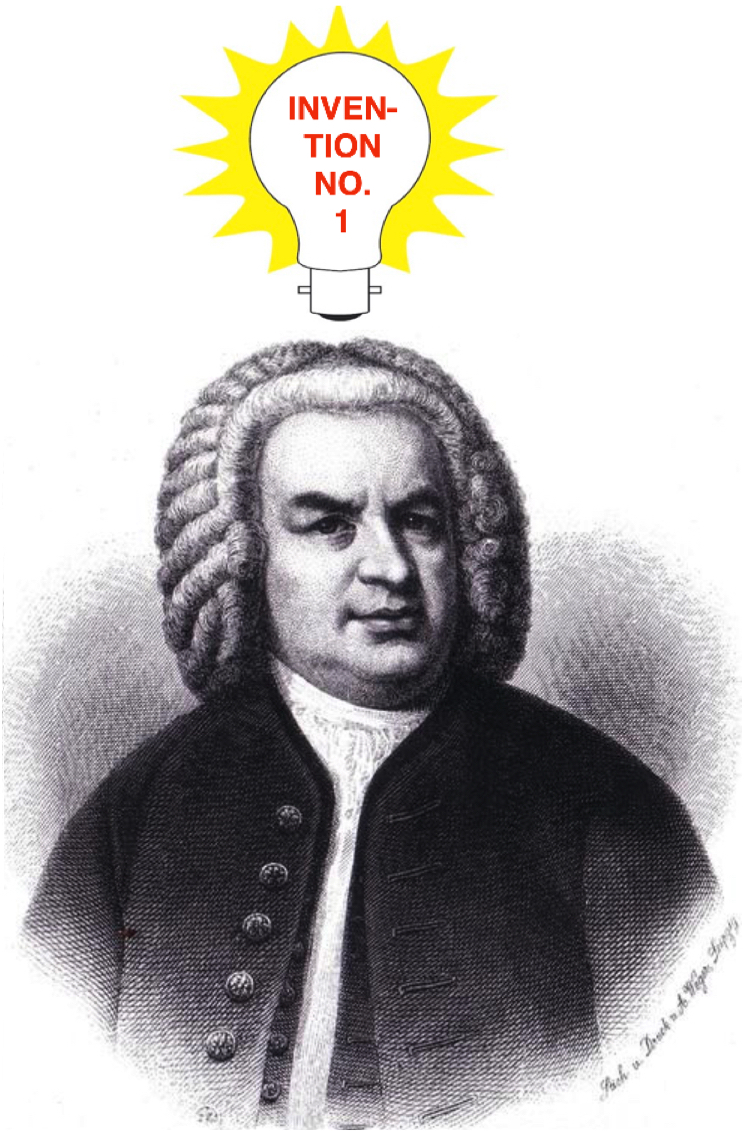
Brilliant idea, Herr Bach! | Until now the Bach Inventions in Intermediate Level 4 have had no markings for phrasing, articulation, fingering or dynamics. Using a similar "bare bones" version from Make Music Inc. (developers of Finale notation software), I added these elements and posted a score of Invention No. 1 with more guidance for you.
Some notation deserves a little explanantion here: - The ornaments are mostly lower mordents with the main note dropping down a step and then back to the original note. However there are a few upper or inverted mordents which do not have a slash through them. These should be played rising a step and then back down again.
- Secondly, be sure to play the last note of each phrase short--as if that last note had a dot on it. That will help separate the phrases.
- And lastly the symbol with both a dot and a horizontal line means to play the note detached, but not as short as staccato.
Write your comments at the facebook group. |
|
April's NEW Music! The Ukrainian national anthem in Level 4ASo the Russian invasion of Ukraine grinds on. You or your students will want to play this arrangement of the Ukranian national anthem in sympathy with those who have suffered there.
Your new arrangement is between Levels 3 and 4, beginning in the key of F (played in a traditional F 5-finger position) and ending in D minor (played in D-minor position). Consider playing or assigning this meaningful piece.
Write your comments at the facebook group. | 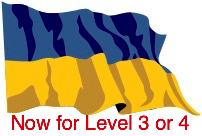 |
MORE NEW music for April! "Follow the Drinking Gourd" in Level 2C 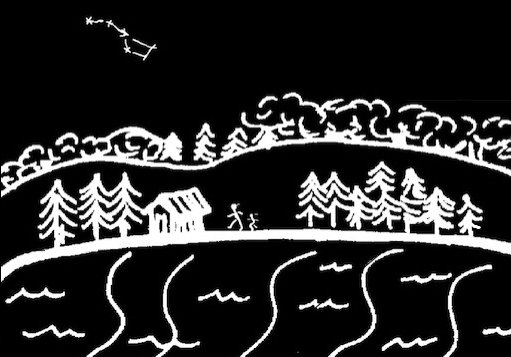 | Legend has it that in this song the drinking gourd refers to the constellation of the Big Dipper. Two stars in the Big Dipper point to the North Star, and in this song it is the North Star which guides runaway slaves to freedom.
This new piece is in a D minor hand position with the exception of a B-natural on the very first chord and third finger crossing over the thumb at the end of some phrases. As in many Level 2 pieces, these are gentle tugs leading students away from strict hand positions. At this point, to help break away from reliance on hand positions and finger numbers, I have found that my students benefit from letter name drills.
Write your comments at the facebook group. |
|
A Bonus piece for March: The Ukrainian national anthem (beginning) in Primer Level AThis arrangement of the beginning of the Ukranian national anthem is a tribute to the brave citizens of Ukraine who are doing their best to defend themselves against Russian aggression. The piece is accessible to beginning pianists familiar with thumbs-share-C position.
Write your comments at the facebook group. |  |
MUSIC for MARCH! A Prelude by me, Gilbert DeBenedetti, in Intermediate Level 4  | If you are an advanced pianist you will enjoy playing this Debussy inspired prelude.
Write your comments at the facebook group. |
MORE for March: Last month's pieces in lead sheet notaion in Levels 1C and 4A 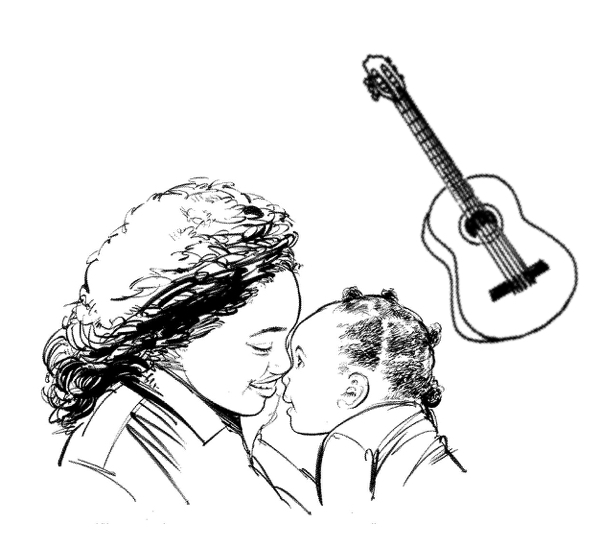 | New Chords: "Oats, Peas Beans and Barley Grow" in Level 1 gives you the option of playing I and V7 chords with just two notes. "Oh Mommy, Oh Mommy" in Level 4 introduces you to the A minor chord in the key of C.
Write your comments at the facebook group. | 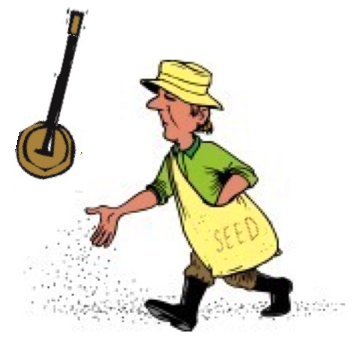 |
|
NEW in FEBRUARY! "Oats, Peas, Beans and Barley Grow" in First Pieces A 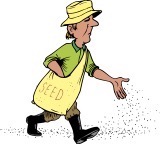 | "Oats, Peas, Beans and Barley Grow" sings the praises of a farmer working the land to plant our food ...And it does so with just five notes played with just one hand. Not only is this the perfect piece for introducing the piano keyboard and musical notation, it is also a satisfyingly familiar song--see how many YouTube videos I found!
Write your comments at the facebook group. |
ALSO for February: "Oh Mommy, Oh Mommy" composed by me in Level 3CIf you have ever cared for a baby or a young child, I wrote this song for you. While the melody, inspired by "Hush Little Baby", is childlike and while the words are from the perspective of a child, the harmonies and skill level are more sophisticated than in most children's songs. So it is really an older child or an adult who will appreciate this piece. I hope you enjoy my latest original gift to you.
Write your comments at the facebook group. | 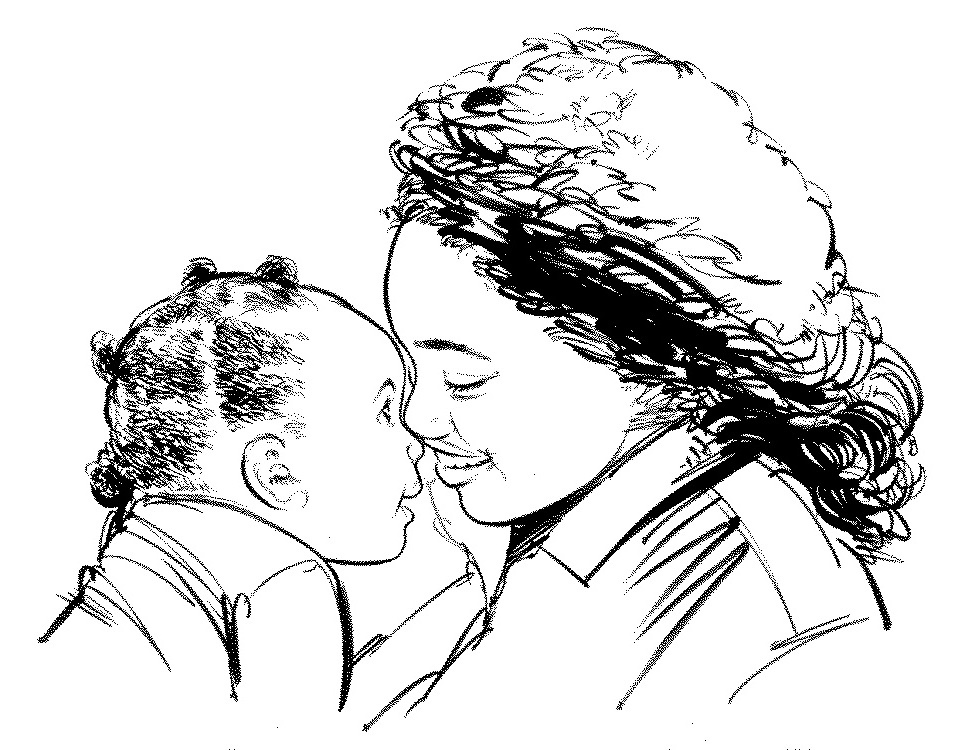 |
|
HAPPY NEW YEAR 2022 and CONGRATULATIONS
You are finally bringing back the sun!
Imagine the power you must have when you can play "Oh Mr Sun" and
"Keep on the Sunny Side" (from October and November) and there is actually
an affect on the sun! Just think, today--New Years Eve day--in my home town
there were two more minutes of daylight than on December 21. Good job!
NEW music for JANUARY 2022: Two pieces in lead sheet notation
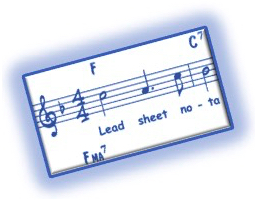 | You can use lead sheets as learning tools for students at any level; their use should not be limited to playing jazz and pop music. Lead sheets add intellectual and tactile/motor dimensions to learning to play piano--intellectual in the recognition of chord names and tactile/motor in relying on the feel of chords. Lead sheet notation emphasizes these dimensions by eliminating the usual visual cues of notes on the page.
Your new pages are unusual for lead sheets in that, while the melody at first appears in treble clef (as is usual), the melody then moves to bass clef for the left hand. This reversal in the roles of the hands provides excellent and often neglected practice.
You can find more practice with the feel for chords in my "Five Finger Patterns and Chords", available on my exercises page. |
1. "A-Tisket A-Tasket" with I and V7 chords in C, F, G and D in Level 2A...| "A-Tisket A-Tasket" is the easier of the two pieces in lead sheet notation. There are only two chords to choose from in each key and the chord changes are less frequent than in "Good Morning." |  |
...and
2. "Good Morning" with I, IV & V7 chords in C, F, G, D, A & E in Level 2C  | In "Good Morning" the student plays three chords for each key and the changes of chord are more frequent than in "A-Tisket A-Tasket". There are also small stretches beyond the five-finger position in the melody hand. The versions in the keys C, F and G are appropriate for Level 2C while the other keys are meant for students at Levels 3 and 4.
Write your comments at the facebook group. |
|
See earlier postings of sheet music in the archives for 2010, 2011, 2012, 2013,
2014, 2015-2019, and 2020-2021. | |

















































































